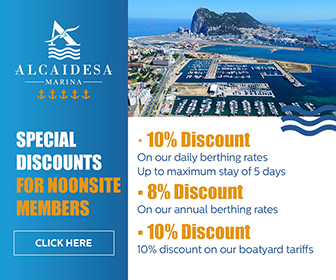Morocco: Out of the Med and into Chaos
If you have ever considered a visit to Morocco, this report by long-term liveaboard Alison Gieschen will most definitely tempt you. Full of glorious details of touring Morocco, as well as the difficulties her and her husband Dan experienced on trying to leave the Med, this is yet another great read from a Noonsite regular contributor.
Published 11 months ago
Our adventures in the Mediterranean ended. We had worked our way east after leaving the safe harbor of Valencia (Spain) where our boat had spent four long months. During that time we returned to the US for the holidays. Then, we flew back to Valencia for a month of refits.
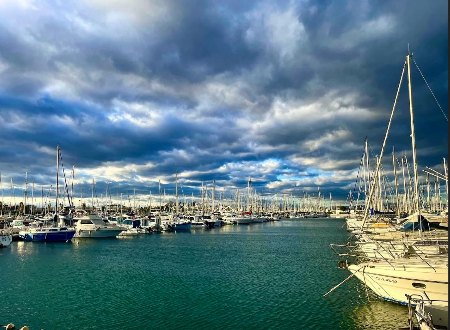

Refit tasks
I rebuilt our cockpit enclosure – which was a major feat. I built our first one five years prior, before we set sail, with the tutelage of a sewing instructor. I was learning how to pattern and sew and what better way than to build something we needed anyway. It was a week-long project, eight hours a day. I learned a lot, but now that I was on my own, I wasn’t confident I could recreate it. With Dan’s help, we took down the old one and section by section built the new one. We certainly had our share of mistakes and many times where we had to rip out seams and start over. However, we both feel our final product is as good, if not better than the original. Win-win!
Dan’s tasks were much more difficult. He had to order solar panels, all the new connections, and lithium batteries to replace our dying lead-acid batteries. Ordering the parts and getting them shipped to our marina turned into Herculean efforts on Dan’s part. It was a miserable experience getting the information he needed, finding if the parts were in stock, and if they would ship to Spain. He definitely acquired a few new gray hairs during this job.
Once all the parts arrived, Dan used his engineering superpowers to install and upgrade our entire energy system. Let me tell you, what a difference it has made. This was the best upgrade ever. We only wish we had done it sooner. Dan has now officially replaced every major system on our boat.
The Waiting Game
Upon departing Valencia in late March 2023, we hugged the coast of Spain on our way out of the Med. As we sailed, we realized that our autopilot was having issues. They were not bad at first, just a few “no rudder response” warnings. When this happens, we have to re-engage the autopilot and correct the course. It occurs on occasions when the currents or wind conflict with the operation of the rudder. Unfortunately it was occurring way too frequently and on a simple downwind course. Since we had replaced the entire autopilot system four years prior in St. Martin, it was way too soon to be having issues.
We decided to wait until we reached the Canary Islands to address the issue, as it offers a hotbed of repair options. Sailors gather in the Canaries before crossing the Atlantic. Many boats get repairs there before making the 2,000-mile voyage.
A side of Morocco
In the meantime, we were excited to stop and explore the country of Morocco. Many of our sailing friends had been there already and everyone agreed it was magical. Because of our delay, most of our sailing friends had already seen Morocco, sailed to the Canaries and crossed the Atlantic to the Caribbean. We were tagging along at a slow pace and were months behind everyone else. As it turned out, that may not have been a bad thing.
The wind that funnels through the Strait of Gibraltar can be fierce. Dan said his worst experience when he was traveling on ships with the Merchant Marines was in this Strait. He had crossed multiple oceans several times, so this experience had to be rough. The reason the seas can be rough here is that the Atlantic Ocean and the Mediterranean, meet, collide and are reduced to a narrow passage between the continents of Africa and Europe.
Tumultuous results can occur when the tide and wind are battling in opposite directions. In order to cross from the coast of Spain to Morocco, we had to wait for good weather. Even then, it’s a scary crossing as hundreds of ships are using that canal on a daily basis. Trying to cross the strait in a small sailboat while dodging gigantic ships is a bit like playing the game Frogger.
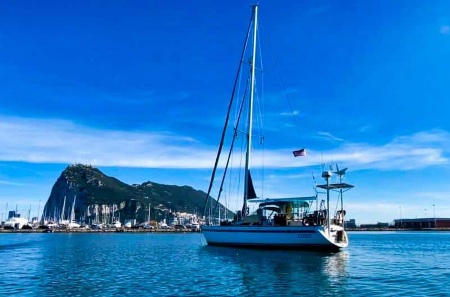

Waiting for a weather window
That being said, when we got safely to Gibraltar, which is in sight of where we wanted to go, it was excruciating waiting for the weather to cooperate. There’s nothing so frustrating as being able to see where you want to sail and spending over a week waiting to be able to cross.
We had another problem. All our friends were able to get into the Tangier Marina. It’s a gigantic marina in the heart of Tangiers. From there, you can explore all of Morocco with ease. We were not able to get in touch with the marina by phone or email. Our repeated attempts to communicate with them failed. We took their lack of response as a sign they were full and didn’t want our business.
The problem with just showing up is that if they don’t have room for you or won’t take you, you have a major problem. Morocco does not allow anchoring without special permission. Your choices are to go back from where you came, a 6 to 8-hour sail back (which will now be in the dark across all the shipping lanes you had heart attacks crossing to get there)… or continue west.
East of Morocco is Algeria
You really don’t want to go east as you will probably be arrested if you try and anchor off Algeria. There are no friendly ports of entry along that portion of Africa. Further west of Tangiers is the cape, the northwestern corner of the continent. Once you round the corner there are few hospitable anchorages or marinas. You will have to sail for two days to the next one in Morocco and hope you can get in again, or five days to get to the Canary Islands.
Going to Plan B
You might now understand the reason we didn’t want to arrive at the Tangiers Marina without a reservation. Thus, we went to plan B. We ALWAYS have a plan B. Rarely does plan A happen. We sat in Gibraltar looking across the strait to Africa when finally, the wind was in our favor. We were diverting to a Spanish province tucked into the African coastline abutting Morocco, the harbor of Ceuta. From there we would travel by land to Tangiers.
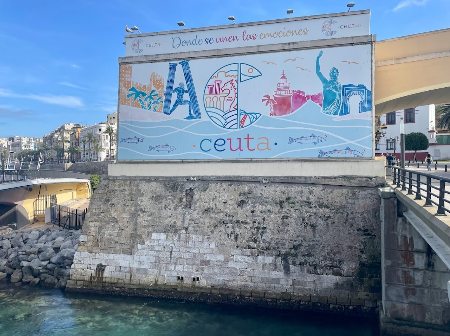

Day sail to Ceuta
If you’re like me, you are wondering how there’s a part of Spain on the continent of Africa – here is the explanation. For centuries, Ceuta was a port city, offering protection for Spanish ships and acting as a trading post between Europe and Africa. In the 1930s, Spanish troops garrisoned in the city played a major role in future dictator Francisco Franco’s uprising against the government. Morocco gained its independence in 1956, following more than four decades of rule by Spain and France. Spain refused to include Ceuta in the handover. Thus, Ceuta is a tiny Christianity-based city surrounded by a Muslim country.
Looking forward to finally getting to Morocco, even if by a roundabout route, we headed off for a pleasant day sail to Ceuta. Other than almost being run over by a huge research vessel, the crossing was pleasant. We were able to sail. Our autopilot did show signs of failure more frequently than our previous sail.
Once tucked safely in the marina in Ceuta, we planned our four-day trip to Morocco. Morocco is another country where you can’t just pick up your bags and head over. You can’t simply get on a train, bus, or taxi and drive the hour to Tangiers. You first have to cross the border into the country of Morocco, then take a taxi to a place where all the former modes of travel are possible. We decided on a taxi ride all the way to Tangier; actually two, since we would need a taxi to get us to the border.
We spent the evening walking around Ceuta which is filled with forts and historical landmarks. Statues of Hercules and his pillars were everywhere. The marina was even named Hercules Marina. He was definitely an icon that we came to learn about on our travels through Tangiers.
Traveling to Morocco
We called for a taxi the next morning which dropped us off at the border, a mere 8-minute drive from the marina. Nothing in Ceuta is more than a short drive. We arrived early in the morning so there were no lines. We walked up to the counter for pedestrians (there was the regular border crossing system for vehicles) and got stamped out of Spain. We took a short walk down a heavily gated path into the country of Morocco. There, we went through the process of being interviewed, getting our passports stamped, having our luggage x-rayed, and being permitted into the country of Morocco.
Blending of cultures
As soon as we set foot on land we were met with the vibrant energy of the Moroccan border, bustling with people from different cultures and backgrounds. We crossed the border on foot and it was an exhilarating experience to witness the blending of two cultures, as we went from the European vibe of Ceuta to the vibrant, colorful atmosphere of Tangiers.
We had scheduled a driver to pick us up on the other side of the border and take us to our hotel in Tangiers. He didn’t speak much English, so it was a quiet ride through the incredible countryside of Northern Morocco. One of the things that immediately caught my eye was the breathtaking coastline, stretching out as far as the eye can see. The crystal clear waters of the Mediterranean were glistening under the sun, and the rugged cliffs made for an impressive backdrop. It was like stepping into a postcard.
We had no idea that Africa had regions of beautiful, mountainous coastline. It was a scenic ride. An hour and 20 minutes later, we were dropped off at the base of the old city and told someone would come to meet us and take us to our hotel.
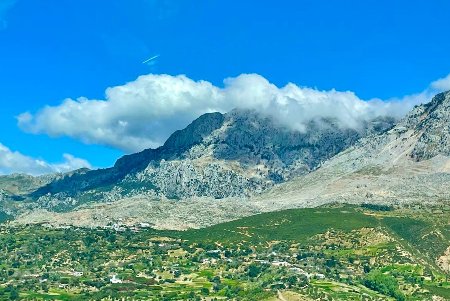

Sure enough, a very kindly gentleman showed up and escorted us up, and into a city where the streets are so narrow, we now knew why the driver of the van did not venture to drop us off at the hotel. Jamal turned out to be our long-lost Moroccan brother. He was so helpful. We had previously arranged a camel ride and tour the following day. He helped coordinate the pick-up the following morning as it was clear our driver would not be picking us up at the door. He attended to our every need. He recommended the best places to eat and even walked us to the restaurant. Jamal was there every day to make sure we had everything needed during our stay at the Hotel Palace.
The best cuisine
The food in Morocco is some of the best cuisine we’ve had in any of the 46 countries we’ve traveled to. The city is famous for its delicious mint tea, which we enjoyed while sitting in a traditional Moroccan café, watching the hustle and bustle of the city go by. Mint tea is a staple since no alcohol is served at Moroccan restaurants.
We tried some of the traditional delicacies, like tagine, a savory stew made with meat, vegetables, and spices, and couscous, a flavorful dish made with tiny grains of semolina. The seasoning was mouthwateringly incredible! Not only was it abundant and delicious, but it was also very inexpensive. There was no way we could finish the portions we were given. There was so much we used them as two meals and packed half away to eat for lunch the next day. Thus, we ended up only eating out once a day. We bought some local cheese, bread, and fresh fruit from the markets to snack on as well.
We spent the day wandering around the city on our own. We went to the top of the highest point and marveled at the views. We strolled through parks, down the fascinating streets woven through the historic architecture and into the markets where we bought olives and our favorite spices.
The mosques of Tangiers
When visiting Tangiers, one cannot help but notice the beautiful mosques that are spread throughout the city. These mosques are not only stunning pieces of architecture, but are also deeply connected to the spiritual and cultural identity of Tangiers.
One of the most iconic mosques in Tangiers is the Grand Mosque, also known as the Mosque of Sidi Bou Abib. This mosque was built in the 17th century and features a beautiful courtyard with fountains, as well as intricate mosaics and tilework. We were in awe of the peacefulness and serenity that permeated the mosque, and we felt the deep sense of reverence that permeates from its center.
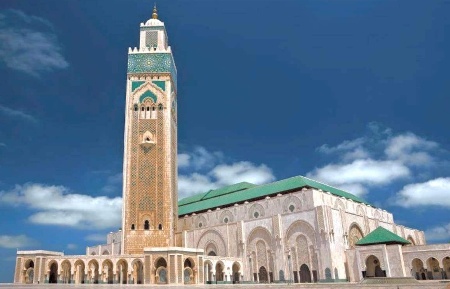

But it’s not just the physical beauty of the mosques that make them so special – it’s also the sound of the prayers reverberating around the city. Five times a day, the call to prayer echoes through the streets of Tangiers, reminding its inhabitants of their connection to a higher power. We found the sound to be both haunting and beautiful, and it added a layer of depth to our experience of the city.
What to do in Tangiers?
The history of Tangiers is fascinating. As we explored Tangiers, we couldn’t help but feel the weight of its rich history and culture. Tangiers has been a melting pot of different civilizations for centuries, with influences from the Phoenicians, Romans, Arabs, and Europeans all contributing to its unique identity.
It’s not just the scenery that makes Tangiers so special – it’s also the people. We had the pleasure of meeting many locals during our visit, and they were some of the kindest and most hospitable people we’ve ever encountered.
One of the most interesting aspects of Tangiers is its role as a gateway between Africa and Europe. In the early 20th century, it became an international zone, with different countries vying for control over the city. This led to a unique mix of cultures and languages, and Tangiers became known as a haven for artists, writers, and musicians.
Tangiers is a bustling city with a rich cultural heritage. There are many landmarks and attractions to explore, from the Grand Socco market to the Kasbah and its’ Museum. The following day was our tour and camel ride on the beach. Our amazing guide, Taidi, took us on a personal tour through parts of the city we would never have found our way to on our own.
Taidi took us through the maze known as the medina. It’s filled with local shops and artisans. He explained facts about the culture, the people, and the history, all of which we would have never discovered had we been our own. We made our way to the Kasbah, the old fortress that sits at the top of a hill and offers incredible views of the city and the sea. It was fascinating to learn about the history of the Kasbah, which was built in the 17th century as a fortress to protect the city from invaders.
Most people who live in Morocco never visit outside their country. They have to get a visa which is expensive and hard to get. Our guide was passionate and educated about his country and shared unique information that made the trip truly personalized.
On our way to the camel ride on the beach, we were given a tour of the coastline. One of the most iconic features is Cape Spartel and the lighthouse that sits atop the cape, overlooking the sea. The lighthouse was built in 864 by the French and still serves as a navigational aid for ships passing through the Strait of Gibraltar.
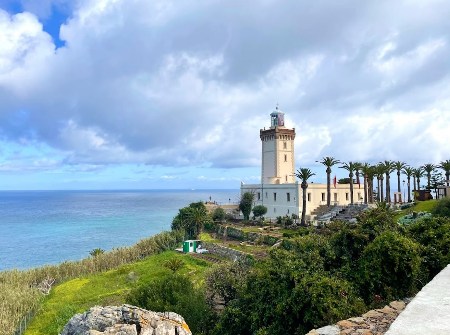

Standing at the base of the lighthouse, we were struck by the sheer power of the ocean as it crashed against the rocky cliffs below. It was incredible to watch the waves of the Atlantic Ocean collide with those of the Mediterranean Sea from this vantage point. We knew we would be sailing through those waters when we left Gibraltar. Little did we know how rough and problematic that passage would be.
In addition to its natural beauty, Cape Spartel also holds a significant place in the history and culture of Tangiers. The cape is said to be the spot where the ancient Greeks believed that the Pillars of Hercules, which marked the edge of the known world, were located.
The Caves of Hercules
One of the most fascinating physical sites in Tangiers is the Caves of Hercules. Legend has it that this cave was one of the resting places of the legendary hero, Hercules, as he made his way across the Mediterranean Sea. The caves themselves are carved out of the rocky cliffs on the Atlantic Ocean coast and feature a large opening, in the shape of the African continent, that looks out over the water. The natural beauty of the caves is stunning, but what makes them even more intriguing is their connection to the legend of Hercules.
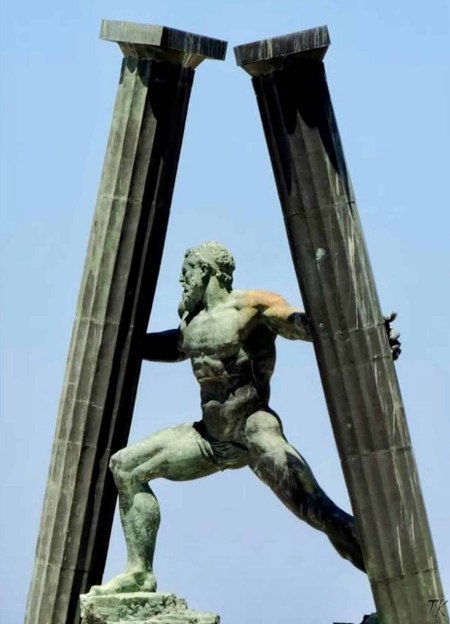

According to Greek mythology, Hercules was tasked with completing 12 impossible tasks, one of which was to obtain the golden apples of the Hesperides. As he journeyed to accomplish this task, he is said to have rested in the caves of Tangiers. It is said that he even carved out a small opening in the cliff face so that he could drink from the Atlantic Ocean. The legend of Hercules has played an important role in the history and culture of Tangiers, and it is a source of pride for many locals. The connection to this legendary hero is just one example of the deep roots that Tangiers has in both European and African history.
There were plenty of iconic landmarks and places to visit, several of which we stopped at before we arrived at my favorite part of the trip.
Camel Rides on the Beach
I thought that since I have an extensive background with large horses (I used to train 18 hand draft horses), that camels would be no big deal. Wrong. I was terrified of them at first. They made horrible sounds and didn’t seem friendly. However, I pushed my fear aside and cozied up to one that seemed like it didn’t want to bite my head off.
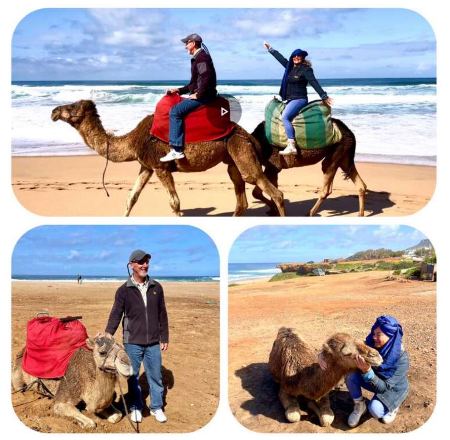

The ride itself was breathtaking. I always thought I wanted to ride a camel in the desert. This was so much better. The water was gorgeous, the cool sea air invigorating and the sight and sound of the waves lapping on the beach topped off the perfect experience. Camels are gentle and friendly beasts and our camel guide was amazing. You can see the video of our tour and camel ride on our YouTube Channel called Touring Tangiers.
Overall, Tangiers is a city that will captivate you with its history, culture, and natural beauty. And there’s no better way to experience that beauty than by taking a camel ride along its stunning coastline. So pack your bags and get ready for an adventure you’ll never forget!
Tangiers Marina
The day after our wonderful tour and camel ride, we walked a couple of miles from our location to the coast to see the iconic Tangiers Marina. The Tangiers Marina is a stunning modern marina that has become one of the city’s most popular destinations for locals and visitors alike. This impressive marina was built in the early 2000s and has quickly become a hub for boating and sailing enthusiasts from around the world.
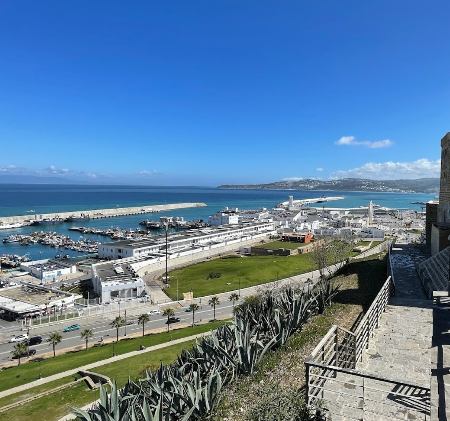

The Tangiers Marina is located on the eastern side of the city and overlooks the Strait of Gibraltar. The marina has over 800 berths for boats of all sizes, and it is equipped with all of the modern amenities. If you can get a berth here it will be well worth the stop. If you don’t get it, you will have to sail away.
According to Moroccan law, it is strictly prohibited to anchor boats within 500 meters of the marina’s breakwaters. This regulation is in place to ensure the safety of boats entering and exiting the marina, as well as to protect the marine environment and the local ecosystem.
We also visited the location of one of the most significant moments in Tangiers’ history relating to the US. It was the opening of the first American legation in the city in 1777. This event marked the first time that the United States was recognized as a nation by a foreign power, and it had a profound impact on the course of American history. A legation is different from an embassy, which is a larger diplomatic representation that typically includes an ambassador and a staff of diplomats. A legation, on the other hand, is a smaller diplomatic mission that typically consists of a minister or a chargé d’affaires.
Legations were very prominent pre-WWII when Monarchies were common, but have since been replaced with embassies. Despite being tiny, the American legation in Tangiers played a critical role in securing support for the American cause during the Revolutionary War. It was successful in securing the support of the Sultan of Morocco, who granted the United States full diplomatic recognition.
This recognition was a critical moment in the history of the United States, and it helped to establish the country as a global power. It also marked a significant moment in the history of Tangiers, and it cemented the city’s reputation as a hub of international diplomacy and commerce.
The opening of the American legation in Tangiers highlights the importance of diplomacy in shaping the course of history. Whether it is a small legation or a larger embassy, diplomatic missions play a critical role in fostering international relations and promoting peace and cooperation between nations. It was fun to stand in the spot that helped give birth to our nation.
A Visit to the Blue City
Nestled in the foothills of the Rif Mountains, Chefchaouen, also known as the Blue City, is a feast for the eyes. It is THE most photographed city in Morocco. It is quaint, colorful, unique and has a fascinating history of its own. We hired a driver through Taidi to take us for the two-hour drive to the Blue City.
After we had our fill of the city, the driver would bring us back to the border near Ceuta. This driver spoke English well. I asked him jokingly if we could stop and get some goat cheese along the ride.
“Sure,” he said. A half-hour later, we pulled over alongside the highway. We dodged the oncoming traffic and crossed the highway to a small building in the middle of nowhere. It appeared to be a tiny restaurant. We entered and approached the counter. Our driver spoke in Arabic to the man at the counter. In a moment, he arrived with a large wheel of goat cheese. The man pulled out a spoon and had me taste it. It was soft, creamy, and absolutely delicious. I was wondering how much of it I wanted to buy. I had no idea of the price. And before I knew it, the driver handed the man money, took the whole wheel, and turned to leave. My jaw dropped. “Let me pay you for that!” I told our driver. I was about to ask Dan for twenty euros or so. He shrugged, and said, “Okay. It’s four euros.” My jaw dropped for a second time. I was headed home with a goldmine. In my head, I was already picturing the cuisine I would be preparing with this cheese. It did not disappoint.
During the last hour of the drive, we saw more gorgeous, gigantic mountains, and incredible lakes. I felt like I was in the Midwest of the US. We gaped at the scenery.
The Blue City
As soon as we arrived in Chefchaouen (chef co wan), we were struck by the incredible blue streets and buildings that surrounded us. It was like walking through a dream, with every shade of blue you can imagine – from baby blue to electric blue and everything in between. It’s not just the buildings that are blue, either – even the steps and the doors are painted in this beautiful color, making everything seem otherworldly.
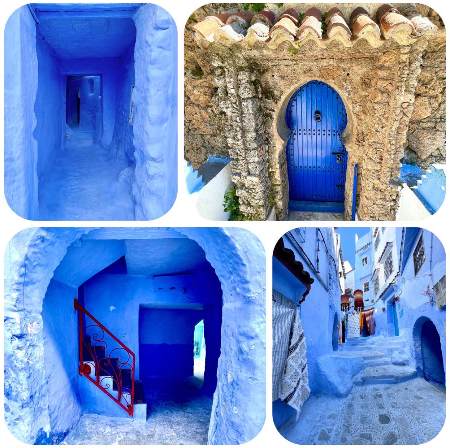

The history of Chefchaouen was as fascinating as its appearance. It was founded in 1471 by the Moors who were fleeing from the Spanish Inquisition. They sought refuge in the mountains, and it is said that they painted the buildings blue to ward off the evil eye and keep the city cool during the hot summers. Whatever the reason behind the color, it has become a defining characteristic of the city and a beloved symbol of Morocco. The residents work hard to keep its brilliant blue and have to repaint twice a year.
As we explored the city, we discovered that the blue color is not just on the outside – even the interior of many buildings is painted in shades of blue. We visited the local market and found ourselves surrounded by blue pottery, carpets, and fabrics. It was like stepping into a sea of blue, and we couldn’t help but feel completely enchanted by it all.
One of the most famous landmarks in the Blue City is the Plaza Uta el-Hammam, a bustling square in the heart of the city that’s surrounded by cafes and restaurants. We chose savory crepes for lunch. They were delicious. The square is also home to the striking red-and-white Kasbah, a fortress that has stood guard over the city for centuries.
Another highlight of our visit was the hike up to the Spanish Mosque, which offers incredible views of the Blue City and the surrounding mountains. The hike is a bit challenging, but it’s worth it for the breathtaking vistas that await you at the top.
We also had the pleasure of meeting some of the locals, who were incredibly friendly and welcoming. We learned about their way of life and their traditions. We were invited inside the heart of the bakery and saw the man pull fresh bed out of the fire-fueled oven.
All in all, our visit to the Blue City was an unforgettable experience. The combination of rich history, stunning scenery, and vibrant culture made it a truly magical place to explore.
Back to the boat
Our trip back to our boat was interesting. We passed along the northeast coast of the Mediterranean-lined beaches of Morocco. They were a huge surprise. This is where the rich and famous come to vacation. The marinas, hotels, and houses, were more upscale than anything I had ever seen. I didn’t know that Morocco was home to such opulence. I’m sure the majority of people who live in Morocco will never vacation there. It is clearly for the wealthy only. Our driver names some of the famous people who have walled residences there, including diplomats from other countries.
Our driver dropped us off at the border near Ceuta. Our half-day drive cost us 90 euros, less than a rental and gas would have been. We were very pleased with our Chico Taxi service while in Morocco.
There were long lines to enter Spain at the end of the day. We waited and without any issues, got stamped out of Morocco and back into Spain. A line of taxis was available and waiting. We got a ride back to the marina where our girl was faithfully waiting.
An unhappy ending
We were able to depart the following day as the weather was good to cross back to Gibraltar. Our original plan was to sail out of the Strait and onto the Canaries. It’s a five-day passage. With our autopilot not working well anymore, we were afraid to make the crossing. So, back to Gibraltar again – it was our third visit there. Apparently, she (our boat) doesn’t want to see us go. The first thing we did upon arrival was call for an appointment to have our autopilot repaired. We pulled into the marina instead of anchoring to make having it serviced easier.
The next day, a technician arrived. He spent about two hours doing diagnostics. He found that the linear drive linkage was loose. He tightened it. We ran all the diagnostics on the system. He felt confident the problem was fixed and good to go.
Of course, now that we were good to go, the weather wouldn’t cooperate. We waited almost two weeks before we finally had a good weather window to make the five-day passage to the Canary Islands. Time was ticking. This would be our only shot to get there before it would be too late. We had plane tickets back to the US the beginning of May.
We headed out that morning with smiles on our faces, looking forward to the routine of a passage. Unfortunately, the autopilot was not only still broken, it was not working at all. By the time we got into the rough part of the strait, Dan had to hand-steer the boat. The waves were higher than predicted, of course, as was the wind. It was turbulent but manageable. We knew we couldn’t hand-steer all the way to the Canaries so we planned to divert to Barbate, a marina on the Spanish coast where we could address the autopilot issues.
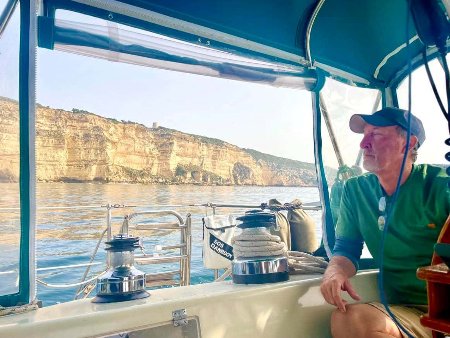

We reached the end of the channel, the wind howling, the boat bouncing in the swells. Instead of falling off to the left to go around the cape to the Canaries, we had to gybe to turn the right to return to the Spain coast. I prepared for the gybe, which we have done many times, it’s noisy and abrupt. This time, it was more than just abrupt, it was disastrous.
The boom crossed the mid-line of the boat. When it banged to the other side, a lot happened. There were several loud noises as parts broke. The gybe-easy, which slows the speed of the boom and causes resistance to make the gybe go smoothly, fell apart. Without resistance, the boom crashed to the other side cracking the fitting. Next, the boom came crashing down to the deck of the boat. Our mainsail had been reefed, thankfully, so only a small portion of it flapped uselessly.
It turned out that the gooseneck, the metal piece that secures the boom to the mast, had broken in two. When the gybe-easy failed, there was a weakness in the gooseneck that caused it to break. It was still windy and rough so we did what we could to secure everything and make it safely to the marina.
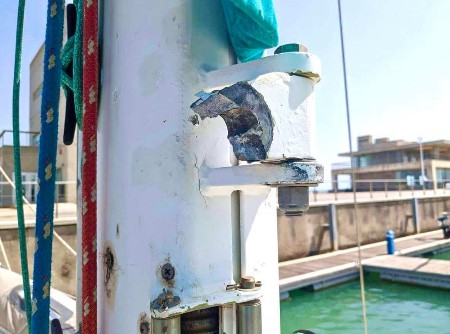

Once safely at the dock, Dan was able to fashion a temporary fix for our boom to hold it back in place. With that done, we headed off to the larger port of Cadiz to try and get our problems resolved.
Getting anything repaired in Spain takes time. It will be twice as long as they say it will take. We have been here a week with no results. As we only have two weeks before we have to fly back to the US, we have secured a place at the marina across the harbor in Rota where our boat will remain for six months.
While we are sad we didn’t make it to the Canaries, we know that we are exactly where we need to be when we are supposed to be there. Had this breakage occurred during our passage to the Canaries, along the inhospitable coast of Africa, or in the middle of the Atlantic, it would have been much worse. We will get our autopilot repaired, a whole new one if necessary and get a new gooseneck.
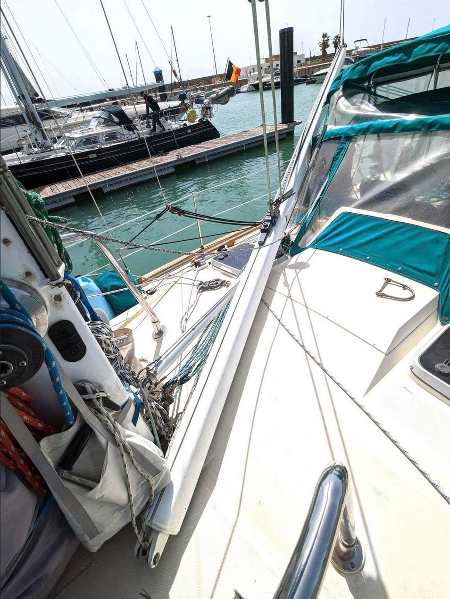
Lesson learned
If there is one lesson I have learned, it’s to trust this journey even though I don’t always understand it. We have had our share of difficulties, but we just need to remember our time in places like Morocco to realize how fortunate we are. Nothing can dampen the wonderful places we’ve seen and the beauty we get to experience. I’m sure our ocean crossing next November will be incredible, and I can’t wait to put another ocean passage under our belts.
Alison and Dan
S/V Equus
……………………………………….
About the Author:
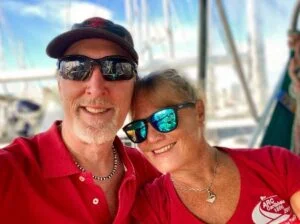

Their plans include visiting every continent and living aboard their sailboat for 10 years.
Read more about their voyages at Sailmates.org
Watch their videos on the Sailing Equus YouTube Channel.
Read Alison’s other INSIGHT articles on Noonsite:
………………………………
Other INSIGHTS can be found here.
………………………………
The opinions expressed in this article are the author’s own and do not reflect the view of Noonsite.com or World Cruising.
………………………………
Find out all news, reports, links and comments posted on Noonsite, plus cruising information from around the world, by subscribing to our FREE monthly newsletter. Go to https://www.noonsite.com/newsletter/.
Related to following destinations: Atlantic Coast (Morocco), Ceuta, Gibraltar, Gibraltar Port, Morocco, Spain, Spanish North Africa, Tangier
Related to the following Cruising Resources: Atlantic Crossing, Cruising Information, Mediterranean, Routing, Travel Information




